
Ferns are naturally found in rocky ground where they can thrive in the cool crevices and shallow soil between the stones and boulders. Some varieties can even cling to the rock face itself, surviving on the most meager nourishment. As a consequence, there are many types of ferns to choose from when designing a rock garden.
The best ferns for rock gardens include the seven types of lip ferns (Cheilanthes), maidenhair spleenwort (Asplenium), polypody (Polypodium), male ferns (Dryopteris), and the various species of maidenhair fern (Adiantum). Any fern variety that can manage in a dry environment with changing temperatures can thrive in a rockery.
The main challenge with a rock garden is that rainwater will run off the rocks freely, and the typically shallow and coarse soil between the rocks drains rapidly. This makes for a relatively dry environment. The rock surface will also absorb and radiate the sun’s warmth through the day, meaning local variation in temperature that the fern will need to cope with. More encouragingly, the rhizomes and roots of the ferns can burrow beneath the rocks to find a cool, sheltered and moist pocket of soil that is well protected.
These conditions mean that ferns which are adapted to dry conditions are the best choices for a rock garden.
Lip Ferns (Cheilanthes)
There are actually 150 different species of the Cheilanthes genus located all around the world. The lip ferns are most commonly found in dryer climates and rocky environments, including deserts, and are some of the most heat and drought resilient ferns known. They are not widely sold in nurseries and garden centers, but there are 7 different types of Cheilanthes that can often be found from specialist suppliers (or by occasional good luck).
7 types of Cheilanthes that will thrive in a rock garden:
- Cheilanthes lanosa (Hairy lip fern)
- Cheilanthes distans (Wooly cloak fern)
- Cheilanthes eatonii (Eaton’s lip fern)
- Cheilanthes fendleri (Fendler’s lip fern)
- Cheilanthes lindheimeri (Lindheimer’s lip fern)
- Cheilanthes tomentosa (Wooly lip fern )
- Cheilanthes wootonii (Bearded lip fern)
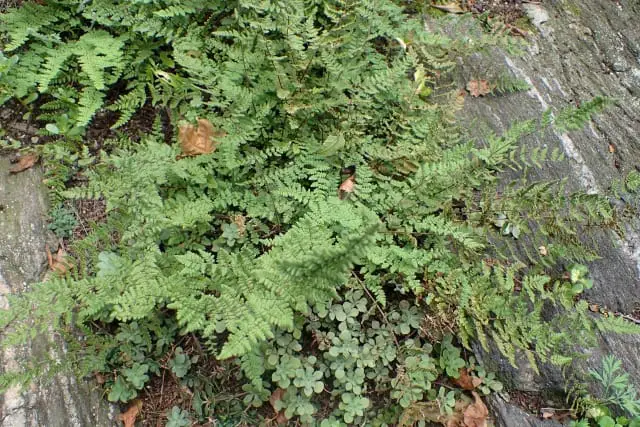
Hairy lip fern
- Cheilanthes lanosa
- Evergreen
- Full sun
- Height: up to 0.5 m
- Soil: acid, neutral or alkaline. Moist, well-drained.
Image credit: Krzysztof Ziarnek
What makes this fern fit for a rock garden?
Lip ferns are drought-tolerant and tougher than you’d expect. They enjoy the sun, and are able to handle dry climates, as well as being hardy to -10° F. The main concern with lip ferns is cold and wet weather together, which can cause serious damage. If you have cold, wet winters, it is worth covering the plants through the winter to protect against the worst of the rain.
Spleenwort Ferns (Asplenium)

The Maidenhair spleenwort is an evergreen fern with long, tapering fronds and black, glossy stems. It appears very small and delicate when growing among rocks, but it’s actually really tough. With bright green pinnae, it stays lush with a fresh-looking appearance year-round.
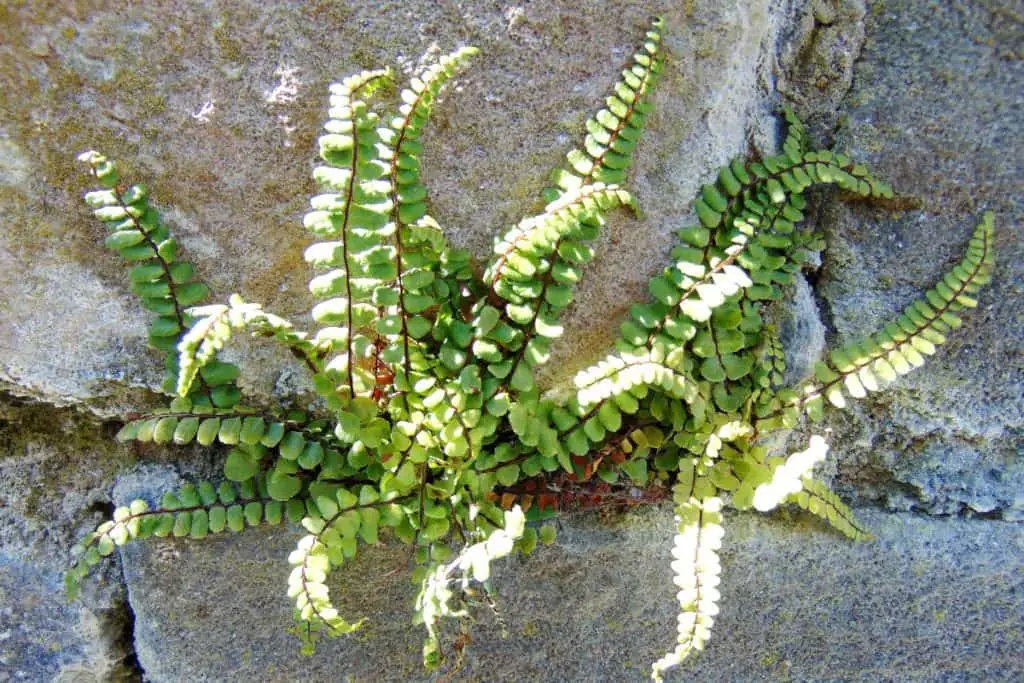
Maidenhair spleenwort
- Asplenium trichomanes
- Evergreen
- Full or partial shade
- Height: up to 0.3 m
- Soil: neutral or alkaline. Moist, well-drained.
What makes this fern fit for a rock garden?
This fern is perfect for your rock garden because it’s low maintenance, copes well with warmth and cold, and is resistant to diseases and pests. In fact, a rock garden is where the maidenhair spleenwort fern thrives best. They appreciate part to full shade and prefer to be grown in fertile, humus-rich, moist, and well-draining soil.
Spleenwort ferns love to live in shady rock gardens, old walls, containers, or as underplanting for roses and shrubs. Growing only up to 6 inches tall, this fern will perfectly fit in your rock garden.
Polypody Ferns (Polypodium)
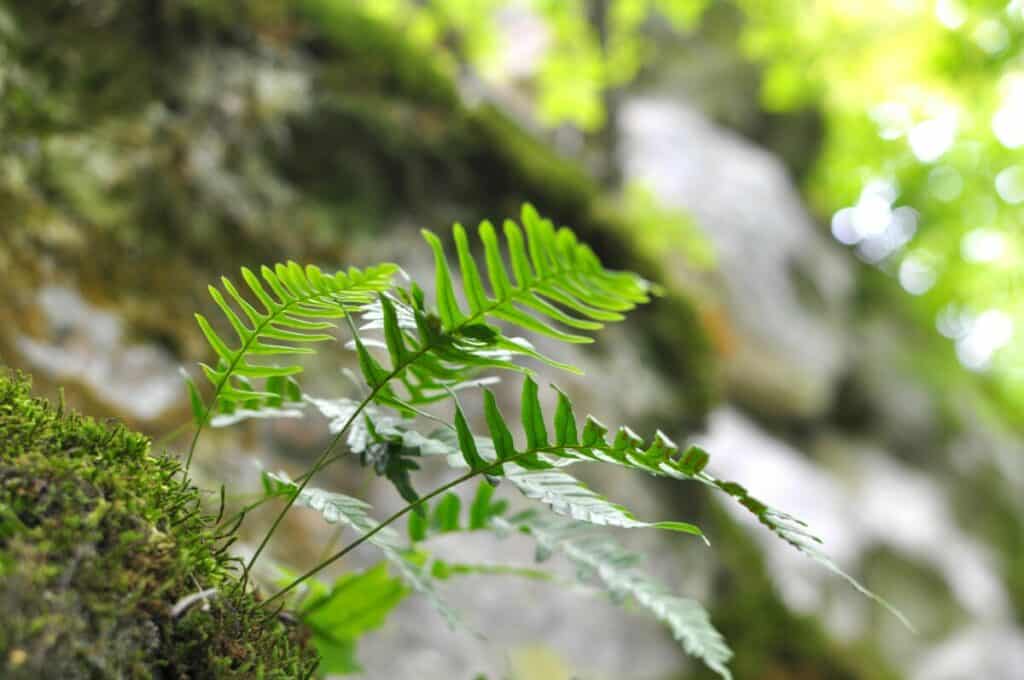
Polypodies are great medium-sized ferns that hang out on damp, shady woodlands, rocks, walls, and mossy branches. The Polypody genus is a large family of roughly 100 ferns found worldwide. They get their name from their rhizomes, which look like a foot (polypody actually translates to “many feet”).
Polypody ferns are real opportunists, and you will often find them in the wild growing over walls, on tree trunks, and in out of the way corners of buildings. They can survive on the thinnest skim of soil or detritus, and are “epiphytic” as they can grow on a surface without damaging it.
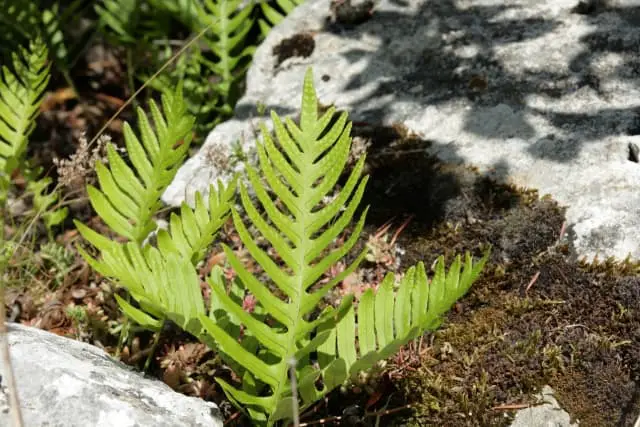
Common polypody
- Polypodium vulgare
- Evergreen
- Partial shade or full sun
- Height: up to 0.5 m
- Soil: Neutral or alkaline. Moist, well-drained.
What makes this fern fit for a rock garden?
Even though polypodies love damp and mossy areas, they can also live in dry conditions. They prefer woodland environments with partial shade and generally cooler temperatures, which is why it often grows in the northern US and continental England. Overall, this fern is a great addition to a rock garden because its normal terrain consists of rocky woods, slopes, and cliffs. They will also spread slowly, colonizing the space between stones in a rock garden and providing a good covering of green.
Male Ferns (Dryopteris)
The Dryopteris genus has many species with a wide range of shapes and styles. Two robust varieties that are widely available for sale will do well in rock gardens.
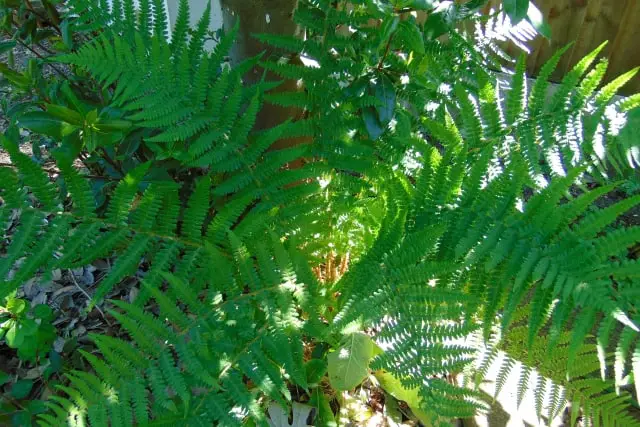
Male fern
- Dryopteris filix-mas
- Deciduous
- Prefers partial or full shade
- Height: up to 1.5 m
- Soil: acid, neutral or alkaline. Moist, poor drainage tolerated.
The male fern is a good all-rounder, which can cope with most environments and is tough and reliable. It has the classic feathery frond shape most people imagine when they think of ferns.
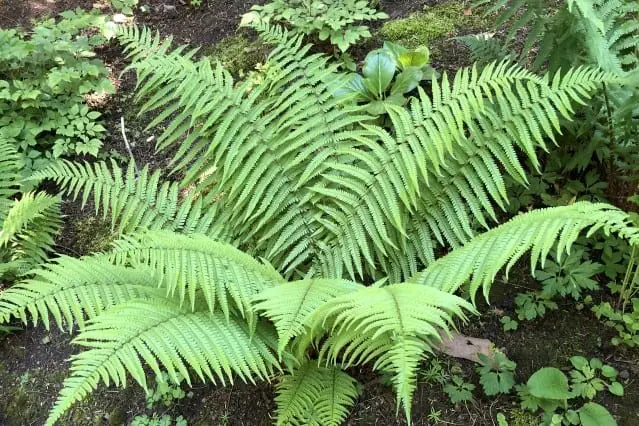
King fern
- Dryopteris affinis
- Semi-evergreen
- Shade, partial or full sun
- Height: up to 1.5 m
- Soil: acid, neutral or alkaline. Moist, well-drained.
The King fern is a semi-evergreen fern that’s native to Europe and Asia has finely cut and arching fronds coming from a stout rhizome. They are bright green once they unfold in the springtime. Later, they mature to a richer green and keep that color throughout the winter. The King fern looks good in just about any garden situation and can grow up to 3 to 4 feet tall.
What makes these ferns fit for a rock garden?
Male and King ferns thrive best in partial shade or full shade and in moist and well-drained soils. They can handle the sun if they have enough moisture, but once they’re established, they are drought-tolerant. It’s recommended to place one of these ferns in shadier parts of the rock garden, but once established they will thrive.
Maidenhair Ferns (Adiantum)
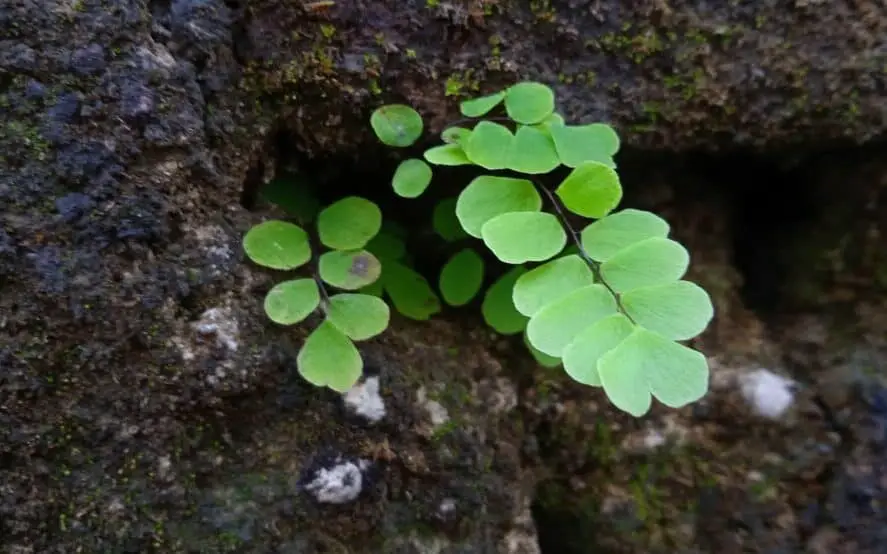
Maidenhair ferns are another excellent choice for rock gardens. They are commonly found growing in the rocky fringes of streams and waterfalls in the wild, where the humid air suits their needs. There are many varieties available which would be suitable, but some popular varieties such as the delta maidenhair are tropical varieties and so best suited to indoor use.
Some more cold-hardy choices of Adiantum are the Northern maidenhair fern, Western maidenhair fern (Adiantum aleuticum), and Himalayan maidenhair fern (Adiantum venustum).

Northern maidenhair fern
- Adiantum pedatum
- Deciduous
- Partial or full shade
- Height: up to 0.5 m
- Soil: acid, neutral or alkaline. Moist, well-drained.
A good choice for a more delicate and pretty variety is the Dwarf Western maidenhair fern (Adiantum aleuticum subpumilum). This variety only grows up to 6 inches tall and 12 inches across. With kidney-shaped to broad and ovate leaves, the fronds grow as long as 4 to 5 inches as they get older, and are tinted with pink while darkening over time.
What makes this fern fit for a rock garden?
The maidenhair ferns are attractive, low-growing, and provide a wonderful cascade of fronds that complement the rocky backdrop beautifully. They do prefer moist and shady conditions, though, and so are best suited to the more sheltered corners of rock gardens, and appreciate regular watering.
The main requirement when choosing a fern for your rock garden is a variety that can cope well with dry conditions, restricted soil conditions, and changes in temperature. The lip ferns are the most naturally adapted choice for rock gardens, but there are many other wonderful options available.
